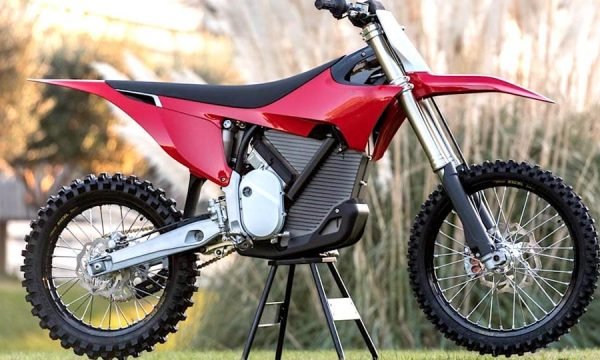When a rotating component with a circular cross-section, such as a motor or engine, or transmitting power through a machine, the significant device in the center of them all is referred to as a motor shaft. A shaft’s main function is to convey rotary motion and power via mating gears, belts, and chains, shafts can be equipped with gears, pulleys, and sprockets.
Just as wherever you find motors and engines, there will be shafts playing a significant role as well. Although motors, generators, engines, and other machines have been very trivial to everybody and may be familiar to your eyes, the shafts may sound a little foreign. They may need a little introduction for a few.
Table of Contents
What is a Motor Shaft?
The majority of rotating instruments depend heavily on shafts. And there are also important factors to take into account while choosing the best material for the electric motor shaft, including price and material
shortcomings.
The core of an electric motor is called the motor shaft. The cylindrical component, known as a motor shaft, extends from the motor and housing. Transferring energy from the motor to the desired usage is the role of the shaft. The motor shaft also serves as the carrier for the laminated center of the rotor, which allows it to transmit the electrically generated torque via the gearbox in a positive manner.
As a variety of machines, engines, and motors exist to perform different roles in various industries, there are also different types of shafts designed specifically for different functions as well.
Types of Shafts
- Transmission Shaft
These stepped shafts are utilized for power transmission from one source to another, equipment absorbing power. Hubs or pulleys are positioned on the stepped part of the shaft gear to transfer motion.
Examples are overhead shafts, countershafts, line shafts, and all factory shafts.
- Axle Shaft
Although the axle is a non-spinning element, these shafts support rotating elements like wheels and can fit in housings with bearings. These are mainly utilized in automobiles. An example is a vehicle axle.
- Spindle Shaft
These are the rotating components of the machine that hold the workspace or the tool. They are utilized in machinery and have a short shaft. Spindle in a lathe machine, for instance.
- Machine Shaft
These shafts are an essential component of the machine and are located inside the assembly. A machine shaft or a crankshaft in an automobile engine is a good example of this.
Characteristics of a Motor Shaft
With the increasing application and demand for motor shafts in different disciplines, there is a significant innovation in the characteristics of the motor shafts. According to the demand of the users, the following are the best characteristics of a motor shaft that everyone should be looking for.
- Lightweight design and engineering can be used by employing a tube and in a built version.
- A combination of various materials is possible.
- Motor shafts should be ready for installation or as a semi-finished component or part close to the final contour.
- Low weight and high transmission capacity to conserve resources.
- The splines can be changed according to customer requirements.
Materials Used for Reliable Motor Shafts
The material typically utilized for shafts is mild steel. Alloy steels such as nickel-chromium, nickel, chromium, and vanadium steel are utilized when great strength is required. Typically, hot rolling, cold drawing, and grinding are used to make them.
Regular shafts are typically made of carbon steel in the following grades: 50 C12, 50 C4, 45 C8, and 40 C8.
Materials used for shafts should possess the following qualities:
- High strength should characterize the material.
- High wear resistance should be included in materials.
- The ability to be heated should be present in the material.
- Good mechanization should be included in the material.
- Low notch sensitivity factor is required for the material.
Standard Sizes of Shafts
Machine shaft may go around 25 mm with 0.5 mm steps.
The transmission shaft, on the other hand, has the following:
Standard size of shaft and its Step sizes
- 25 mm to 60 mm with 5 mm step
- 60 mm to 100 mm with 10 mm step
- 110 mm to 140 mm with 15 mm step
- 140 mm to 500 mm with 20 mm step
Standard shaft sizes for machines range up to 25 mm with a 5mm motor shaft step. Standard shaft lengths are 5 meters, 6 meters, and 7 meters, but they are typically 1 to 2 meters.
Importance of Motor Shaft Alignment
Appropriate motor shaft alignment enhances the performance life duration of rotating equipment. To get this, pieces that are the most probable to fail must be designed accurately to work within their permissible design limitations.
While improper shaft alignment improves the efficient and smooth flow of energy from the motor to the driven instrument, misalignment has no discernible impact on efficiency. If the centerlines of the driven apparatus and the motor shafts are not parallel, an incorrect alignment will nonetheless occur. Misalignment raises coupling and bearing temperatures, adds to noise and vibration, and hastens the failure of bearings, couplings, or shafts.
You should immediately notice that there is a possible motor shaft misalignment when you observe the following symptoms:
Common symptoms of motor shaft misalignment:
- premature failure of a bearing, shaft, seal, or motor shaft coupling;
- axial and radial vibration that is excessively strong;
- high oil discharge temperature or high housing temperature near the bearings;
- the motor shaft seal or the bearing seal is leaking with an excessive amount of oil;
- screws in the foundation are loose, also known as false support.
Common kinds of Motor Shaft Misalignment
Shaft misalignment, caused by improper alignment of matching components such as coupling halves, clutches, shafts, pulleys, etc., is the second most common cause of vibration after imbalance. The certain conditions in which the geometric centerline of two connected axes does not coincide with the axis of rotation is known as the misalignment of axes and couplings in more technical terms.
- Angular misalignment
When the motor is positioned at an angle to the driven equipment, angular misalignment may happen. Instead of running or superimposing along a typical centerline, the centers of the driven device and the motor shaft cross each other if their centers are expanded. When compared to the slope of the fixed machine shaft, the motor shaft’s “space” (difference in space between the coupling faces) or slope can differ either vertically, horizontally, or in both directions. Particularly angular misalignment can seriously harm the driven device and the motor.
- Parallel misalignment
When your two shaft centerlines are parallel but not on the same line, parallel misalignment may occur. Two types of parallel misalignment shafts can be shifted horizontally (to the left or right), vertically (at different heights) or both.
- Combination misalignment
Combination misalignment occurs when the motor shaft experiences both parallel and angular misalignment at the same time. The system’s most frequent instance of misalignment is this one.
What to do when there is shaft misalignment?
Here are easy tips and actions to take in case of motor shaft misalignment:
- At least once a year, verify the shaft alignment of all instruments that are essential to your industry and operations.
- After every 3 to 6 months of use, examine newly installed equipment for alignment changes caused by foundation settling.
- As the primary indicator of misalignment, control vibrations, and trends toward growing vibration. Inadequate bolt tightening, foundation settling, or output shaft issues can all result in misalignment.
- To differentiate between shaft misalignment, bearing wear, or electrically induced vibrations, employ predictive maintenance techniques like frequency spectrum analysis and vibration tests.
Uses of Electric Motor Shaft
An electric motor shaft plays a significant role in motors performing what is expected. In almost all industries, motors and generators sure have critical contributions to their very own accomplishments. All motors and generators rely on a consistent and steadfast shaft to relay its function to the expected production. Equipment with motors is dependent on the ability of the shaft to transmit work. Engines with motors are all reliant on the capability of the shaft and the proper alignment of the performing shafts.
When a rotating component with a circular cross-section, such as a motor or engine, transmits power through a machine, it is referred to as a shaft. To convey rotary motion and power via mating gears, belts, and chains, shafts can be equipped with gears, pulleys, and sprockets.
The shafts that go into the different motors as well are a crucial part of their functionality as AC and DC types of motors are also undeniably essential in all industries.
Overall
As machines and engines depend on motors, the production of reliable electric motor shafts is highly sought after in the market today. To ensure efficiency and business quality, trust only high-quality parts of motor shaft manufacturer Thailand. Visit www.fortune-cross.com/th/ and check the precision-machined parts for reliable metal shafts.
Fortune cross specializes in machining precision grinding and metal shafts in Thailand and the neighboring countries.





